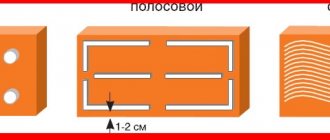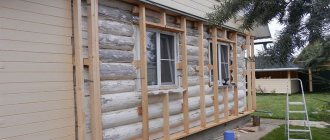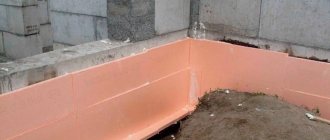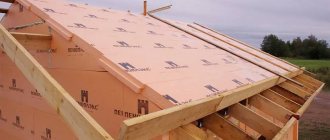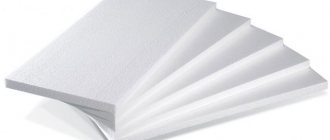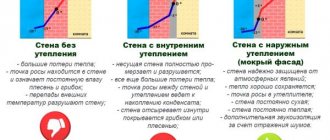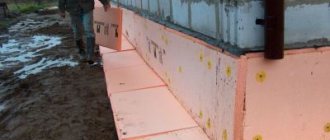Thermal insulation options
So, how to insulate a doghouse? Let's look at several options of varying complexity.
Felt
In terms of time and money, this option is the simplest and cheapest.
You can implement it yourself in just a couple of hours.
- Mats are cut out of thick felt according to the size of the walls, roof and floor. For cutting, use a regular sharp knife.
- They are fastened inside the booth with the roof removed using ordinary roofing nails with wide heads.
- The roof is installed in place.
What is the result? We get quite effective insulation that will not blow through the wind. The material is environmentally friendly and will not harm the health of our pet
What is equally important is that it has good vapor permeability: there will be no dampness in the booth
Mineral wool
Let's be honest: its use is rather dubious. The design will be quite complex; In addition, for the sake of high-quality insulation, the walls will have to be made very thick.
How to insulate a doghouse with mineral wool?
The instructions for thermal insulation work themselves are familiar to anyone who has ever insulated a loggia or balcony using this insulation:
- The walls are covered with a vapor barrier, which is secured with a stapler.
- A lath of 50x50 millimeters is placed on the walls around the perimeter of each.
- Mineral wool mats are cut to size with a knife and inserted into the sheathing, after which a second sheet of vapor barrier is stapled.
- The outside of the booth is covered with plywood, OSB or wooden clapboard along the sheathing.
Styrofoam
Compared to the previous insulation, foam plastic has several noticeable advantages:
- It provides the same effective thermal insulation with less thickness.
- Polystyrene foam does not cake and does not get wet (therefore it is often used to insulate balconies). Its thermal insulation qualities do not deteriorate over time.
How to insulate a dog's kennel for the winter with polystyrene foam? Minus unnecessary vapor barrier - exactly the same as mineral wool.
Along with homemade structures, you can find already insulated doghouses on sale. In most cases, they use foam plastic placed between two clapboard walls. Taking a look at such a product is quite educational.
Roll insulation
Let's be realistic: with an open manhole, thermal insulation will not have a very significant effect on the temperature in the booth. It is much wiser not to increase the thickness of the walls, but to reliably protect the dog from drafts.
In this case, you can get by with inexpensive roll insulation.
Foamed polyethylene provides reliable protection from wind and good thermal insulation even with a thickness of 4-6 millimeters. It is attached to the walls, floor and roof of the booth with the same stapler, after which it is again sheathed with any durable material. There is no need for lathing: short screws can be screwed directly through the insulation into the boards, as long as they do not stick out inside.
Penofol is an advanced version of rolled thermal insulation. Aluminum foil is applied to one side of the polyethylene foam, which reflects infrared radiation. Fixed between the inner and outer walls of the booth, the material will further reduce heat loss.
Does a dog freeze in a kennel in winter?
How does your pet spend the winter? Is the dog freezing in his kennel or is his fur enough to keep him warm? Of course, it freezes, especially if it is not a long-haired breed, and its home (kennel) also runs the risk of freezing, leaking, or being too ventilated. If your dog is truly a friend, then you need to treat it accordingly, that is, create the proper conditions for wintering.
First, you should check whether the booth is located in the right place or whether it should be moved to another:
- the entrance, if possible, should be located in a place where wind movement is minimal (calm);
- in rainy weather, water should not flow under the kennel, so it is necessary to insulate it or place the kennel on an elevated area;
- the kennel should not be located in the open sun, but excessive shade is not an option - you need to find a compromise;
- The dimensions of the booth must correspond to the size of the pet, i.e. it should not be cramped, but it should not be too spacious;
- Natural wood is considered the best material for a dog kennel.
The booth should be insulated in the same way as any other structure, taking into account all the nuances of insulation: proper protection from wind, frost and rain. Insulation can be done from the inside; this is appropriate to do when the structure can be disassembled and assembled or when there is sufficient internal space.
If the kennel is already ready and there is no way to disassemble the structure, you will have to carry out external insulation, then you should take care of the external finishing so that the kennel has a decent aesthetic appearance.
To be sure of the result of thermal insulation, it is necessary to insulate all surfaces of the booth: walls, roof and floor.
Can heaters be used?
Many breeders, faced with the need to insulate a dog’s home, are interested in the issue of heating the kennel. Heating can be provided if desired; moreover, you can even lay a heated mat on the floor. Of course, a heated mat or heated booth will be the best option, as no insulation can compare with this. Moreover, heating the home will help ensure dryness inside.
Today you can find several types of heaters on sale:
I recommend: Types of cardiomyopathy in dogs and methods of its treatment
Is it necessary to insulate a dog house?
Dogs of different breeds tolerate low temperatures differently, but most of them cope well with the cold and are not even averse to sleeping in the snow. This especially applies to dogs of hunting breeds, since they have dense and thick hair.
But to understand whether a dog freezes in winter or not, taking into account only its breed is not enough. Dogs of the same breed tolerate cold differently because they are raised and live in different conditions.
Even the most cold-resistant animal, bred in an apartment or a warm house, will not be able to survive the winter outside normally.
In the Russian winter, the dog needs a warm kennel
The dog's body adapts to environmental conditions, which affects the condition and quality of the coat. Dogs kept in an apartment do not have undercoat, since they do not need it. If such a dog is released outside, especially in winter, it will be cold.
It is worth paying attention to the temperature that is set in the booth in winter. If the dog’s house is made of wood (the most common material), then the temperature in the box will differ by a maximum of 3–4 degrees from the ambient temperature
This is explained by the fact that air circulates freely through the outlet and does not allow heat to linger inside the dog house. Many owners hang a curtain over the exit hole for the winter, however, this is not a sufficient measure to create complete and comfortable winter conditions for the dog.
Liquid insulation Polinor
Polinor insulation is a one-component polyurethane foam, which is sold in cylinders. In appearance it looks like polyurethane foam, and the same gun is used when applying it. To install, just screw the cylinder onto the gun, point its nozzle at the work surface and pull the trigger. The layer should be about 5 cm, but keep in mind that during polymerization the composition increases in volume.
Polinor is insulated exclusively for finishing, so it can only be used for insulating two-layer enclosing structures. Polinor has high characteristics, thanks to which the dog house will be warm:
- thermal conductivity lambda 0.025 W/m*K;
- does not allow steam and moisture to pass through;
- refers to normally flammable materials;
- does not shrink;
- service life more than 30 years.
Polinor is an analogue of polyurethane foam, but its use does not require special equipment, which is very convenient for insulating small areas.
Do I need to insulate a doghouse for the winter?
Many owners of four-legged pets wonder whether the dog’s kennel is cold in winter. There is no definite answer to the question - it all depends on the climatic characteristics of the region and the breed of the dog.
Dog handlers agree that long-haired, wire-haired and short-haired dogs with thick undercoat can withstand frosts down to -40°C. Some breeds, such as Huskies, Leonbergs, Moscow Watchdogs and Bernese Mountain Dogs, prefer to sleep in the snow and stay outside even when it gets cold.
Warm home for a dog
However, whether a dog freezes in a kennel in winter depends not only on the breed, but also on the conditions in which the pet grew up. If he previously lived in an apartment, it will be difficult for him to spend the winter in a kennel without insulation. In a warm room, dogs shed more and lose their warming undercoat. It is necessary to adapt the animal's body to new living conditions gradually.
If the region is dominated by cold winters with long periods of sub-zero temperatures, then it is better not to risk the pet’s health and set up a warm dog house.
The need for thermal insulation of a dog house
Following a number of rules will help create an insulated kennel and reduce heat loss from the structure:
It is better to locate the entrance to the pet’s home in a place where the likelihood of drafts is minimal. It is advisable to use wood for the construction of walls - the material has low thermal conductivity. The dog house should not be placed on bare ground. The structure must be placed on bricks or wooden beams. The air gap will protect the bottom from freezing. A draft is worse than frost for dogs. Therefore, the hole must be curtained with a thick canopy. The material should be dense and weighted so as not to sway in the wind
It is important to maintain the optimal size. The dog can warm the compact booth with his breath
However, in a structure that is too cramped, the animal's movements will be limited.
Calculation of the optimal size of a dog kennel
It is necessary to prevent leaks in the winter hut - eliminate all cracks in the roof and take care of waterproofing the roof even before insulation.
Let's warm ourselves up
In addition to the fact that the owner chooses the insulation option at his discretion, he must also think about how to cover the hole through which the lion's share of the heat escapes. To do this, you need to make a curtain from felt, tarpaulin or other dense protective fabric (even from an old thin rug). The curtain is attached using self-tapping screws and a wooden plank, and it is cut into equal strips so that the dog can walk inside the house. Some owners advise making an attached vestibule to the booth with their own hands, this way they can retain most of the heat inside the home.
You can lay hay or sawdust on the floor of the booth; this bedding is changed regularly. Someone lays rags or rugs on the floor, but remember that the animal does not always understand the purpose of the rug and can simply tear it apart. It is better to replace the rug with burlap or coarse cloth stretched over a wooden frame.
In addition, any insulation must be reliably protected from the inside of the booth. To do this, the interior of the booth is lined with clapboard, plywood, chipboard and OSB.
The video below will tell you how to make the floor of the booth warmer using ordinary hay!
Insulating a doghouse with felt
Let's consider in more detail the option of how to insulate the house of your four-legged guard with artificial felt.
- Roll of artificial felt.
- Sharp knife.
- Nails with wide heads.
Step-by-step instruction
Note that insulating the booth with felt yourself is the simplest and cheapest option. In addition, felt, as we have already noted, is considered safe for your pet and does not need to be “hidden” from the dog.
So, in order to insulate the booth with felt you need:
- Cut the felt into pieces equal in size to the walls using a sharp utility knife.
- Attach the felt pieces to the walls using nails with wide heads. You can also sheath the inside of the roof and floor.
- Felt does not have to be sheathed on top with wood or plywood. By the way, felt protects well from wind and moisture.
Don't forget to lay a warm rug on the floor!
Insulation with mineral wool
Insulating a booth with mineral wool with your own hands is a more labor-intensive process than the previous option. However, it should theoretically provide higher thermal insulation if done correctly.
- Mineral wool;
- Wooden blocks;
- Knife, nails, stapler;
- Vapor barrier;
- Plywood, chipboard or OSB.
Step-by-step instruction
- First, the roof of the booth is removed, and its walls are covered with a vapor barrier, which is secured with a stapler.
- Next, all the walls are covered with a sheathing of beams.
- Using a knife, “mats” of cotton wool are cut to the size of the sheathing and placed in it.
- Next, the cotton wool is again covered with a layer of vapor barrier.
- This entire “sandwich” is tightly sheathed on top with wood, plywood, chipboard or OSB so that the dog cannot disturb the insulating structure.
As a result, the walls insulated with mineral wool turn out to be quite thick. Using a similar principle, you can make insulation with polystyrene foam. A rug on the floor will make your home more comfortable.
Tools
Before you start building the structure, you should prepare the necessary tools:
- screwdriver;
- hacksaw;
- hammer;
- marker;
- ruler or tape measure;
- plane - if unplaned material was purchased;
- metal scissors.
Also, before starting work, prepare the material:
- fasteners - screws, nails;
- bars, boards, lining;
- roofing material;
- insulation;
- plywood or chipboard;
- impregnation to protect wood from external influences.
Important ! All boards and beams should be sanded before building the kennel so that the dog does not get hurt. Only the outer walls of the structure are treated with impregnation, otherwise there will be an unpleasant smell in the booth, which the dog may not like.
You also need to take care of the thermal insulation material before starting assembly, and choose the best option in terms of environmental friendliness, practicality and affordability.
Hay and straw
If your four-legged friend lives in outdoor conditions, then it is highly undesirable for him to use hay or straw as bedding. There is a high chance that your pet will become infected with parasites such as fleas and ticks. In addition, all organic litter is characterized by the presence of enterobacteria: intestinal bacteria, salmonella. Also in straw and hay there are intestinal eels, which cause a wide variety of diseases in dogs. Another significant disadvantage of these materials is that they cannot be disinfected.
However, despite all the dangers and warnings, many owners like to use hay and straw as bedding. They motivate this by the fact that these materials are environmentally friendly, have a pleasant smell and retain heat well.
To prepare hay for bedding, care must be taken not to overdry it. It must be shaken periodically to prevent the hay from becoming rotten. To prevent infection by parasites, it is necessary to regularly, every week, make new bedding with the addition of herbs that have antiparasitic properties: thyme, sage, wormwood. The litter must be shaken every day.
To prepare straw bedding, it is best to use plants with a rigid stem (rye, wheat, reeds). Oat straw is definitely not suitable for this purpose, as it tends to crumble very much.
How to make a warm dog house, drawings, photos
Do-it-yourself insulated permanent dog house: drawings and dimensions. Step-by-step photo instructions for making a doghouse from boards and insulation.
google_ad_client = "ca-pub-1974473278197966"; google_ad_slot = "3501064932"; google_ad_width = 580; google_ad_height = 400; ">
First, you need to decide on the size of the booth, which in turn depends on the size of the pet. The booth should not be large, because the dog will not be able to warm up well in a large kennel; the optimal size of the internal space of the booth should be such that the dog can freely turn around in the booth; the height of the booth is equal to the height of the dog with its head raised.
Optimal kennel sizes for certain types of dogs.
To make an insulated booth you will need timber, boards and insulation. Foam or mineral wool can be used as insulation. You can use nails to fasten the boards, but self-tapping screws are more reliable.
Step-by-step production of a warm dog house: drawings, diagram, photo.
Let's look at the process of making a booth step by step with drawings.
1.STEP. Let's make the base for the booth.
2.STEP. Niche for insulation.
We will need timber with a cross section of 50 x 50 mm. We saw it into bars, two bars of 90 cm and two of 60 cm. We attach the bars to the base.
3.STEP. Laying insulation.
4. STEP. Booth floor.
We will need boards 90 cm long, we cover the insulation with boards, and fasten the boards with self-tapping screws to the timber.
5. STEP. Side walls of the booth.
Now we need to make two side walls, we use boards 65 cm long and bars 40 cm long. We fasten the walls to the floor using metal corners and self-tapping screws; alternatively, you can first fasten a horizontal bar at the bottom of each wall, then screw the bars with screws to the floor , distance between walls 70 cm.
6. STEP. Front and back walls of the booth.
7. STEP. We fasten all the walls of the booth together with self-tapping screws.
8. STEP. We put insulation on the walls of the booth (don’t forget about the vapor barrier for mineral wool).
9. STEP. We cover the walls of the booth with boards.
10. STEP. The roof of the booth. We fasten the roof boards to the walls.
11. STEP. We fasten the bars under the insulation.
12. STEP. We install insulation.
14. STEP. We cover the roof insulation with boards.
Where is the best place to install a dog house?
The booth should be installed in the yard of the house in such a way that the dog has a good view of the yard and the entrance gate, but at the same time, during scorching heat, the booth should be in the shade of buildings, a fence or a tree. In winter, do not forget about the dog’s bedding; the kennel should be half filled with hay or straw to make it easier for the dog to stay warm.
«>
Which bedding is better
In the previous paragraph we looked at the three most common types of dog beds, but you need to remember that there are as many opinions as there are people. In particular, there are dog owners who prefer to use polystyrene foam, padding polyester and other artificial materials. Regarding foam plastic, for example, you can lay it on the bottom of the booth and cover it with plywood on top.
When choosing bedding material, you need to look at the dog’s reaction to all of the above types of litter, since the dog may reject any of them, but will feel comfortable with another type of bedding. Having settled on some material, do not forget to update it from time to time, which will protect your pet from diseases, fleas and other negative factors.
Kennel insulation technology
Floor and bottom
- You need to start work with insulating the floor and protecting the bottom. To do this, you need to turn the structure upside down. Treat the surface with protective agents against material destruction and cover with roofing felt (can be secured with bars). This provides external protection for the floor.
- Turn the booth over and continue insulating the floor. Cover the floor with insulating film, it can be the same roofing felt or glassine. To avoid gaps, it is better to lay it overlapping and shoot it with a construction stapler, and also, it’s good, to put film on the walls.
- Next comes a layer of insulation that needs to be covered. If the insulation is bulky or too soft, it is better to fill in bars (such as joists) for installing the finished floor.
- Laying the finished floor. To do this, you can use a regular (pre-treated) board or boards (plywood, OSB).
- To prevent the booth floors from freezing and leaking, it is recommended to do additional insulation work. At the site where the booth is installed, according to its dimensions, it is necessary to make a shallow excavation (up to 20 cm), fill it with gravel or expanded clay, and cover it with an insulating film (roofing felt), which should come to the surface. For external insulation, it is hemmed under the cladding. If you install the booth on a similar base, this will minimize freezing of the floor and protect it from water.
Walls
The walls are insulated according to the standard scheme for each insulation. Step by step it looks like this:
- wall treatment;
- waterproofing (if necessary);
- fastening (installation) of insulation;
- vapor barrier (if necessary);
- wall decoration (when using certain insulation materials).
The main condition when insulating the walls of a doghouse is to prevent the space from being blown through and water from getting inside it.
Roof and ceiling
The roof-ceiling in one design is suitable for a kennel located in an enclosure with a canopy, where leakage is almost impossible, otherwise, it is better to make a pitched roof for the kennel, and it must be removable.
We insulate the so-called “attic” of the roof in the same way as the floor. First we fix the insulating film on it, then the insulation. When the roof is insulated, the dog will not have access to it, so there is no need to close it.
It is also better to protect the internal slopes of the roof from wind and moisture; to do this, you need to line them around the perimeter with insulation or insulating material.
Additional heating
If insulation is not enough, you can equip the booth with heated floors or a heater.
- The panel heater is a safe-to-use device with a thickness of 20 mm and a metal body. The surface heats up to 45-50 degrees Celsius. The advantages of a panel heater are: silent operation, spacious installation, resistance to humidity and economical energy consumption.
- Warm floor. To construct a heated floor, a heating wire is installed and connected to the power supply. This is best done during the construction stage of the booth. A box is constructed from pieces of plywood according to the size of the floor, and bars are nailed along the edges. The heating cable is connected to the thermostat. An electrical cable is connected to the other side. All cracks are carefully sealed. The heating cable is secured through the holes in the base of the box. A hole is made in the base for the wire. Sand is poured into the box and the lid is nailed.
- A film heater is a thin film that emits infrared waves. It distributes heat evenly, is economical and does not heat up. Due to the fact that the length of the waves emitted by the heater and the length of the waves emitted by the dog coincide, the heater has a positive effect on the health and immunity of the animal.
A way to insulate a dog house with mineral wool
Often a doghouse is insulated with mineral wool. But this option has certain difficulties. Mineral wool retains heat better. Among the materials for work you will need mineral wool, plywood, a vapor barrier and wooden beams. You should stock up on tools with a stapler and nails.
Stages of insulation with mineral wool:
- First, the roof of the booth is disassembled. Then they lay the vapor barrier on the walls using a stapler.
- Then the walls are lathed with beams.
- Mineral wool is mounted on the sheathing. You should measure and cut out the necessary pieces in advance. Mineral wool is carefully placed between the beams.
- A vapor barrier is laid on the mineral wool.
- The final stage will be covering the internal surfaces with plywood.
Insulation for booths thickens the walls in the booth. Because of this, the area of the home is reduced. For greater dog comfort, you can create warm floors by laying a bedding or rug.
Wall construction
Each insulation is installed in its own way; the exact diagram is always described in the instructions attached to the material. But in any case, the following activities are always carried out:
- they begin to work by preparing the surface of the walls, they are cleaned and then treated with special compounds;
- if necessary, lay a layer of waterproofing;
- produce sheathing with insulation;
- fix the vapor barrier material;
- perform cladding.
Important!
When thermally insulating a doghouse, it is necessary to take into account that there should be no blown areas in the design. To do this, when covering the frame, all cracks and gaps are sealed.
The best way to insulate a dog house - step by step instructions
Don't want your dog to freeze in winter, but have nowhere to buy a suitable kennel? You can make a pet’s house comfortable at home. How and what is the best way to insulate a dog house with your own hands.
When should you insulate a booth?
An uninsulated dog house can protect against wind, rain and direct sunlight, but not against cold. Insulation is recommended for:
- all dogs living outside during the cold season;
- puppies and older pets, as well as dogs in poor health year-round.
Insulation can be “built on” to an existing kennel or done during the construction of a dog house.
Required tools and materials
To insulate the booth, you will need the following:
- rescue blanket;
- vapor barrier film;
- rigid polymer thermal insulation;
- bubble wrap;
- insulation for walls;
- wall panels;
- plywood;
- carpet covering;
- wooden pallets.
It is also recommended to install a transparent plastic door and pour hay inside the booth - the dog will make a cozy “nest” in it, and it will be even warmer. Don't use batting - it's ineffective when wet and can harbor rodents.
In order to insulate the floor, you must perform the following steps:
- Place a vapor barrier and a safety blanket between the doghouse and the ground (or concrete) it sits on. This layer prevents the entry of dampness and cold air, as well as heat loss. Replace the layer when it tears or becomes moldy.
- Create a platform under the booth. A wooden pallet topped with a sheet of plywood will raise the dog house above wet or cold ground. The bottom and sides of the pallet are covered with foam or bubble wrap.
- Make a half sandwich. Additional layers of plywood sheets covered with insulation are placed inside the booth (if it is spacious) or outside (if it is small).
To insulate the roof:
- Make thermal insulation. Use foil, plastic or bubble wrap. These materials are easy to cut and attach to the inside of the roof, and cover the top with panels.
- Strengthen the roof. Install rigid polymer insulation and insulate it with panels or plywood.
- Reduce heat loss. Cover the outside of the roof with tarps or wall insulation. In summer, this layer must be removed for natural ventilation of the booth.
For walls:
- Make sandwich walls. The steps are the same as when creating a “sandwich” floor, but additional panels are installed on top.
- Hang carpeting. Attach hooks to the walls of the booth and hang pieces of carpet on them. Do not use this method in areas with high humidity!
- Provide heat and moisture insulation. A tarpaulin or other protective woven synthetic material that does not allow water to pass through is suitable for this.
https://.com/watch?v=lfs5vNeKyEA
Be careful to ensure that your dog doesn’t start chewing and eating insulation – this can lead to serious health problems. Plywood and wall panels are needed to prevent the animal from reaching the more dangerous (and chewable) inner layers. An additional budget method of insulation is to move the booth to the veranda from the ground or concrete.
- elatka
